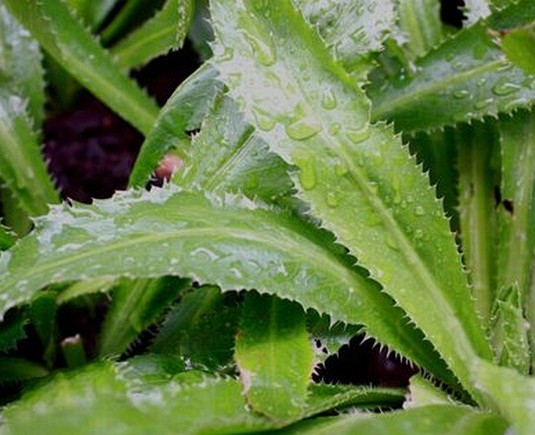A lesser known and underutilised exotic herb of India but a common herb of North East is CULANTRO !
Eryngium foetidum is a slender, evergreen, branched perennial with fibrous roots and lanceolate leaves 4-6 inches long, which have spiny-toothed margins.
Eryngium foetidum is also called ,Spiny Coriender , Sawtooth Coriander , Culantro , Ban Dhania , Mexican Coriander,Mon Dhania , Bilati Dhonia , African Malli , Burma dhania etc .
This is a slender, evergreen, branched perennial with fibrous roots and lanceolate leaves 4-6 inches long, which have spiny-toothed margins.
This is a herb that was never cultivated in the North East till late nineties but was collected from wild and used as spice in different soups, curries, salads and meat dishes because of its sweet aromatic flavour and as a good appetiser.
Moreover, now it is extensively used in perfumery and cosmetic industries.
Culinary uses :
The appearance of Culantro and cilantro are different but the leaf aromas are similar, although culantro is more pungent. Because of this aroma similarity the leaves are used interchangeably in many food preparations and is the major reason for the misnaming of one herb for the other.
Spiny Coriender / Culantro has long been used in the Far East, Latin America, and the Caribbean cuisines .
In Thailand, Malaysia, and Singapore Culantro is commonly used with or in lieu of cilantro and topped over soups, noodle dishes, and curries.
In Latin America, Culantro is mostly associated with the cooking style of Puerto Rico, where recipes common to all Latin countries are enhanced with cilantro and most popular and ubiquitous examples are salsa , sofrito or recaito sauces .
Medicinal uses :
Cultantro is reportedly found to be rich in calcium, iron, carotene, and riboflavin.
It is also interesting to note that Eryngium Foetidum is used extensively for medicinal purposes to combat fevers, stimulate appetite, improve digestion, combat colic and stomach pains, and as an aphrodisiac. The herb can also be eaten raw to relieve the inflammation. The fresh leaves when boiled and taken as tea serves as an antidote for flu, diabetes, constipation, and fevers.
In North East local farmers sells fresh herbs for Rs.10.00 per bundle of 3-4 plants .
Interested foreign vegetable growers / poly house cultivators can contact BHC Ventures through email : bhcv@ymail.com for local heirloom variety seed or sapling for commercial cultivation .
